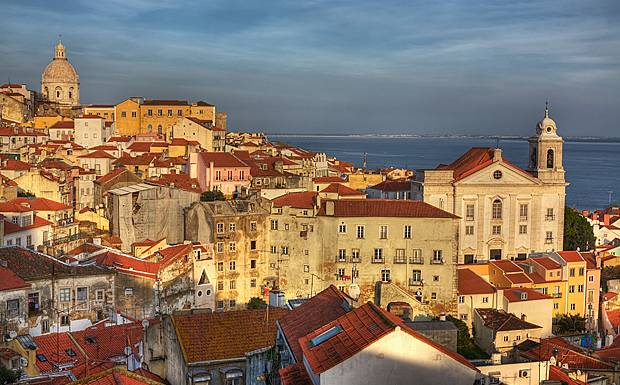Lisbon
WITH A metropolitan-area population of 2,682,687, Lisbon is the capital and largest city in PORTUGAL. It is located on the right bank of the Tagus River, where it forms a large estuary providing a natural safe harbor close to the ATLANTIC OCEAN. The city evolves over a series of hills and enjoys a Mediterranean climate, with mild winters and warm dry summers.
Lisbon was the capital of a worldwide empire for more than 400 years and is the main political, economic, and cultural center of Portugal. The origin of the settlement is remote. Occupied by the Romans in 205 b.c.e., the town was confined to old Castle Hill and the slope leading to the river. It was conquered by the Moors in 714 and recovered by the Crusades and the king of Portugal in 1147. Lisbon was promoted to capital of the kingdom in 1255, and thanks to commerce between the Mediterranean and northern Europe, it became a primary urban center during the 13th and 14th centuries.

Serving as base for the Portuguese expeditionary navies in the age of discoveries, the city benefited the most from this period and became a significant cultural and economic center: infrastructures and especially monuments were built, and the city expanded to the west. In 1527, Lisbon already stood out among Portuguese cities and gained importance at a European level. An earthquake in 1755 destroyed most of the city. The downtown area (Baixa) was rebuilt as a regular grid aligned with the river, replacing tortuous medieval streets and turning it into a hallmark of Lisbon for its unity and architectural value.
Until the development of railroad transportation, the river was the main thoroughfare for the transport of people and goods between the city and more interior areas of the country. During the 19th century industrialization, mass transit was introduced and larger factories were installed along the river, attracting peasants from the countryside and originating typical worker neighborhoods. At the end of that century, the opening of Avenida da Liberdade, a wide boulevard, changed the form of the city by directing growth toward the north. However, by 1940 Lisbon was still concentrated and close to the river. On the hill to the west, the 2,540-acre (1,028-hectare) Monsanto forest park was created on still undeveloped land.
After World War II, a sharp increase in urbanization pushed growth beyond the limits of the municipality, and toward the west and north along main transportation routes (especially railroads). Population of the city stabilized in the 1950s, and by 2000 only 20 percent of the population of the metropolitan area lived within city limits. In the 1950s and 1960s, new industrial areas were located in Cabo Ruivo and on the south bank, connected by a bridge in 1966. More recent transformations include the expanding network of expressways and construction of large peripheral shopping centers, underlining the ongoing strong suburbanization. Part of the east riverfront was rebuilt to replace heavy industry with an area of residential use.